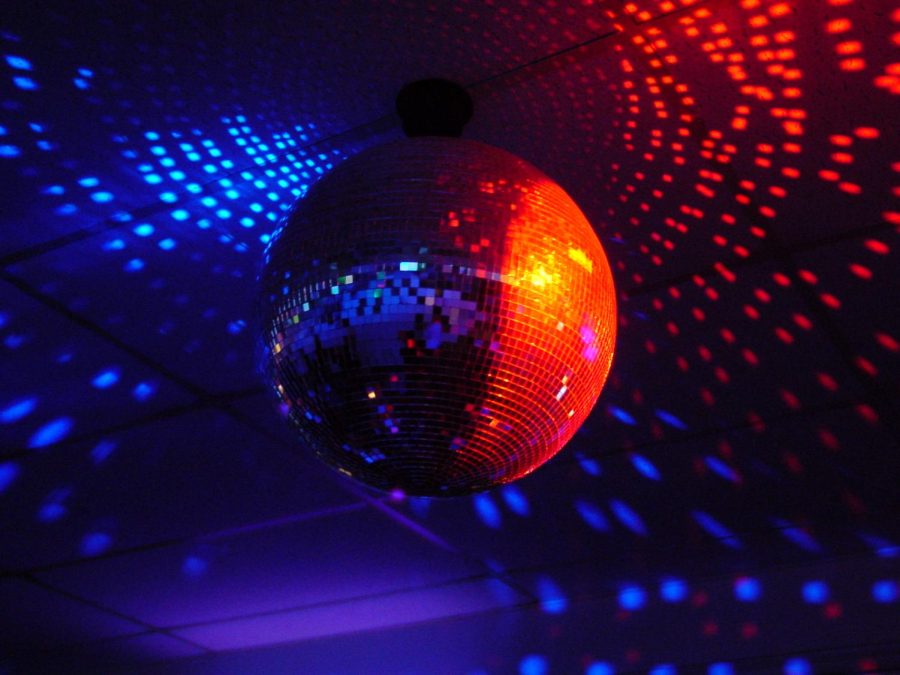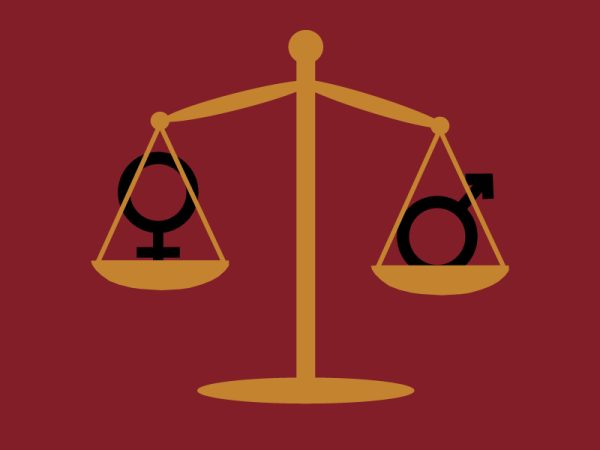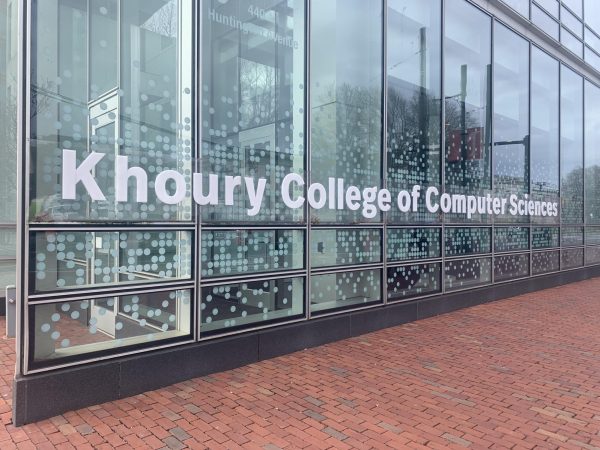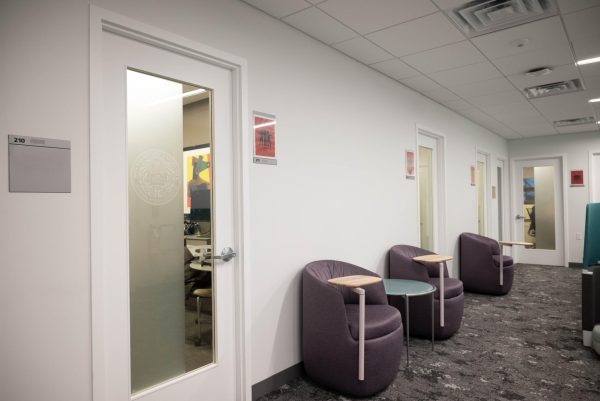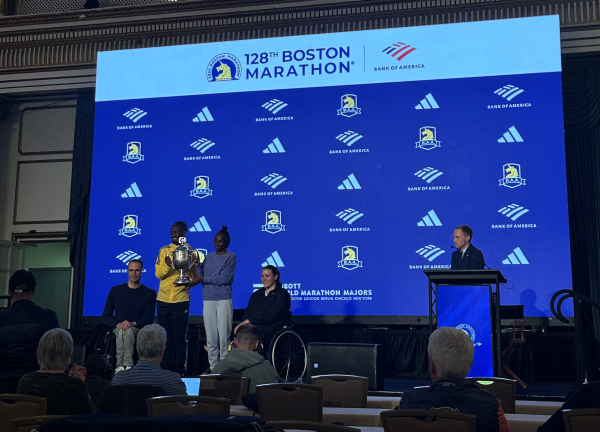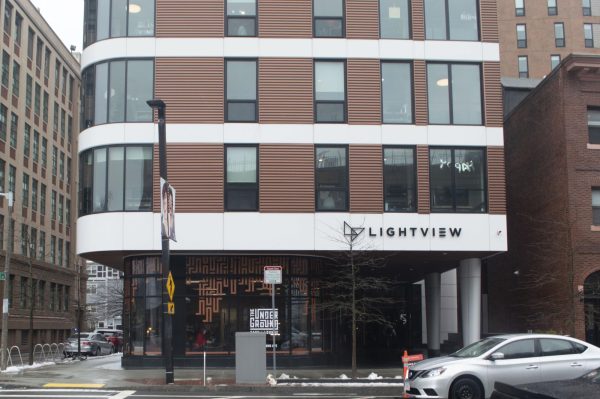Make some noise for Northeastern’s first Silent Disco!
October 9, 2021
Gleaming through the doors of the Curry Ballroom, vibrant lights invited passing students to make their way inside to a space made complete with echoes of laughter, strained voices chanting the lyrics to pop-princess tracks and dance circles fueled by TikTok’s latest trending choreography. With multicolored circles floating along the floor in the effect of a mirrorball, Northeastern’s Friday night disco had begun. The only thing missing? Music… or so it seemed.
The soundtrack to the night could only be heard through wireless headphones, glowing in either red, green or blue — an indication of their chosen channel of music.
Hosted by Northeastern’s Council of University Programs, or CUP, on Sept. 17, the long-awaited Silent Disco appealed to undergraduate students looking for a night to dance to their own private beat.
“It was a really cool scene,” said Leila Abdul-Malak, CUP’s marketing coordinator and a third-year health science and psychology combined major. “My favorite part of the event was watching everyone switch between playlists when a classic was on.”
Attendees had the choice between three different playlists, displayed on a projection screen to the side of the ballroom: throwbacks and classics; today’s top and pop; and EDM. Switching between these channels colored the headphones with a distinguishable light, allowing partygoers to gravitate toward groups of like-minded listeners. While a traditional disco warrants ringing ears and pounding music at the hands of a DJ, a silent disco’s power lies in its “choose your own adventure” style of fun.
If given the choice between a silent disco and a more conventional party scene, there was no question, attested Megan Lam, a third-year architecture and design major. “I would definitely choose this,” said Lam, who welcomed the night’s theme in a head-to-toe ’70s disco ensemble. “It’s not like high school parties where we would all end the night complaining about the DJ they hired.”
“I can switch between channels, and everything is completely up to me,” said Lam’s friend and night-long dance partner, Pragnya Kousik, a third-year business administration major.
This idea of noiseless clubbing is not a new phenomenon to entertainment, particularly for universities. From freshman orientation parties to dance marathons, colleges locally and across the nation — including Boston University, New York University and the University of Southern California — embraced the opportunity to host soundless, community-building festivities for their students. However, the popularity of silent discos does not end there.
“I actually saw this on Netflix once,” Lam said. “Shout-out “Atypical” for inspiring me to come tonight.”
Netflix’s coming-of-age series “Atypical” features a silent disco prom in accommodation for Sam Gardner, the 18-year-old protagonist with autism. Silent disco headphones appeal particularly to those on the autism spectrum, and to anyone who may experience overwhelming sensory sensitivity, social anxiety or a lack of control in customary club settings.
Lam, Kousik and Bhavashah were three of more than 100 attendees that flocked to the event after scrolling past intriguing CUP Instagram flyers. As special events chair of CUP this year, fifth-year health science major Charmy Patel was more than delighted to work with the council’s marketing team to create unique promotional materials. The much-anticipated event was then officially announced at the beginning of the semester.
“When Northeastern announced that we would be allowed to have in-person programming, I was eager to bring students together again,” Patel said. “I’ve actually been thinking of hosting a silent disco for over a year now, mostly inspired by my love of dancing around with my friends and seeing smaller scale pop-up silent discos around Boston.”
While organizing an event of this scale brought its own challenges, such as tracking down and retrieving packaged headphones from the mailroom — a struggle Northeastern students know of all too well — the chance to provide students with a night to remember sustained Patel’s persistence.
“After a full year of hybrid learning and little-to-no in-person programming, I wanted to give students an opportunity to create some non-virtual memories, step away from the world and dance beside their friends for a couple of hours,” Patel reflected. “By the looks of it, I’d say we were able to do exactly that.”
As the hours passed, the confidence in the room grew more palpable. No longer intimidated by the familiar, vulnerable feeling of singing in the shower, voices grew in volume and strength beneath mandatory masks. Walking across the room allowed one to simultaneously experience the undeniable verses of Doja Cat and SZA’s “Kiss Me More,” Train’s “Drive By” and the faint beats of EDM tracks escaping blasting headphones.
Despite the ballroom’s occasional “battle of the bands” atmosphere through competitive sing-offs between pop ballads and throwback tunes, the sense of unity hanging in the air was nearly tangible. For many, this was the first time since quarantine-tinted days to sing, dance, and simply socialize in a room brimming with new and old friends.
“Unlike other community events, which focus on bringing together people with shared hobbies, cultures or career goals, our event was open to people of all backgrounds and interests,” Patel said.
After a year of pandemic policies and virtual barriers to community-building, a silent disco provided the unique opportunity for undergraduates to find a place for dance and audible conversation, creating a memorable night for everyone.


